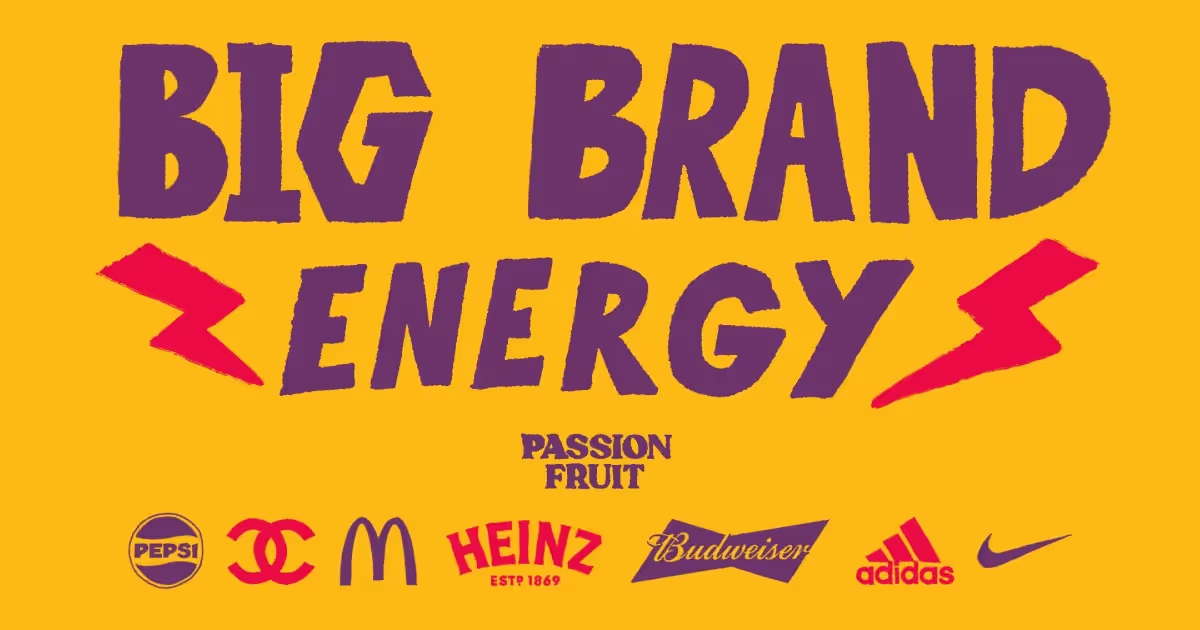Creating a successful startup marketing strategy can be a daunting task. Marketing is essential in every type of business, but none more so than in early-stage startups which rely on rapid growth to survive. If customers don't know you exist, it could spell disaster for your fledgling business.
As well as helping your startup to grow, an effective marketing strategy will demonstrate why your company stands out from the crowd. Chances are your business will not be totally unique, so it's important to take stock of the business landscape, your rivals, and content that resonates with your target consumers.
Why do some startups work and some fail? Alongside a great product, laying a solid marketing foundation will be the thing that sets you up for success.
In order to help you on your startup journey, Passionfruit have created this in-depth source full of actionable information that could revolutionise your marketing and content strategy, whether B2B or B2C.
We know a thing or two about growing businesses with marketing, so keep reading to discover the blueprint for your startup marketing strategy.
The Foundations
Establish What Makes You Different
To ensure any marketing efforts don't go to waste, it's important to nail down your messaging.
A Compelling Unique Value Proposition
The importance of clearly articulating your startup's Unique Value Proposition (UVP) cannot be overstated.
A UVP is the primary reason that a prospective customer will keep reading about, and eventually buy, your product (or not). It describes the unique value of your service or product that a customer will only find in your business.
Your UVP needs to be:
- Relevant - it needs to solve your target customer's needs.
- Quantifiable - what specific benefits are there?
- Unique - why should the customer choose your business over the others?
Check out Slack's UVP:
Connect all the tools you use to Slack and avoid all that constant
switching between apps. Set up your integration so that you get
all your notifications directly within Slack - from support
requests, code check-ins, and error logs to sales leads - all of
them searchable in one central archive.
It describes how it will solve annoying app switching, which is relevant to their target audience. It details the benefits (notifications in one place) then why Slack is unique (everything searchable in one central archive). Their UVP tells us that using Slack will make your work life easier, smoother and more productive.
Use language that is relevant to your target customers and be sure to test out your UVP by sharing it with those potential customers.
The Marketing Boilerplate
A marketing boilerplate is where you describe, in under 100 words, who you are and what you do. This is the copy that will feature on your website, press releases, and marketing campaigns.
It's different to a UVP because it gives a more general overview of your company and isn't focused on benefits for the customer.
It might include:
- where and when it was founded
- its offering
- its mission
- major milestones and awards
- a call to action guiding readers to socials or the website
Having a boilerplate that everyone in your company uses avoids miscommunication and confusion so ensure everyone has a copy of it.
Check out this example from Goldman Sachs:
The Goldman Sachs Group, Inc is a leading global investment banking, securities and investment management firm that provides a wide range of financial services to a substantial and diversified client base that includes corporations, financial institutions, governments and individuals. Founded in 1869, the firm is headquartered in New York and maintains offices in all major financial centres around the world.
Define your target audience
Detailed user personas
How do you decide who to tailor your UVP and boilerplate for? You probably have an idea of the age and gender of the people who use your product, but it's important to go further and create clearly defined user personas.
Defining your target audience by creating fictional user personas allows you to get to know them on a deeper level, helping you to target them more effectively. A visual representation of a customer base will allow marketing teams to tailor their messaging and build stronger connections.
Information should include things like demographic, job, hobbies, frustrations and what their favourite brands are. You should get as detailed as you can; for example, you should know how much time they spend on the internet and how often they shop.
The research to create the personas will likely involve interviews with your current customers or selecting social media followers and finding information about their preferences and interests from what they share.
Set goals
Your 'North Star'
Your startup's North Star is a metric based on what your business needs to grow and survive: customer satisfaction. If your business brings value to the customer, your business will thrive.
Even though different departments might contribute to the North Star in different ways, for example a salesperson might increase sales where a developer might improve website experience, all teams will be unified under one, long-term, company-wide goal.
A good North Star metric:
- Increases when customers receive value
- Is simple and easy to remember
- Encapsulates the whole funnel
Some examples of North Stars:
- Facebook: Daily active users
- AirBnB: Nights booked
- Salesforce: records created
Basically, how would consumers behave if they loved your product or service? Then how many of them are behaving like that?
In the shorter term, SMART goals (Specific, Measurable, Attainable, Relevant, and Timely) are often used. These allow startups to prioritise goals in order of urgency, so you don't get overwhelmed with tasks.
One example of a SMART goal could be: gain 25% more followers by the end of the year.
The goals of startups should be to raise brand awareness and acquire new customers, solid long-term and short-term goals help you to stay on track.
Wondering where to start in terms of hiring marketers? Henrietta, PR Specialist, advises:
"The most cost-effective strategy for early stage startups would be to hire senior freelancers... For your first in-house marketing hire, you need a head of marketing or head of comms. Someone who is experienced enough to set up and run your marketing/comms function and build a team."

Getting the basics in place
Once your messaging is in place, it's time to work on getting that message out there.
Optimise your website for SEO and conversions
SEO (Search Engine Optimisation) means trying to get traffic to your web page by making it list higher in search engines. This essential marketing tool is executed using keywords, title tags, image tags, design, structure and more.
An SEO audit is vital to ensure your website can compete in search engine rankings. Without this, you might be failing to rank on search engines entirely, due to a coding error for example.
Conversion marketing can refer to a customer making a purchase, signing up for a newsletter, a course or a free trial. This method focuses on building conversion rates within existing traffic, not only trying to find new customers.
Good copywriting sells. High-quality content goes hand-in-hand with SEO to increase search engine visibility, and conversion marketing has more chance of success if it's well written. Aid your brand's cohesiveness with a clear tone of voice and create something that is recognisable and appeals directly to your target consumer.
Through copy, you can also highlight your USP, mention prices, promotions and exclusives, incite people to take action, include keywords, and tailor the writing to appeal to your target market across devices.
Related content: B2B SaaS SEO: 6 Actionable Tips for Startups >
Basic goal tracking
It's important to set up basic goal tracking before your marketing strategy because it will be easier to monitor whether you're operating on schedule or not. Moreover, goal tracking can help clarify ideas, focus efforts, ensure time and resources are used efficiently, and increase the chances of achieving the company’s primary objectives.
Basic goals to track include trial sign ups, which many companies get a lot of their business from. It's also an opportunity to conduct customer surveys and find out more about the user experience and conversion. You should track sales in order to spot patterns, close deals more efficiently and forecast future sales. Lead tracking helps your marketing team to discover what kind of journey the customer has made before buying from you. Then they can find more appropriate potential customers to make more sales.
Use Google Analytics to track goals. It analyses user data from all visitors by using page tags, and then compiles customisable reports for you to act on.
One of our growth marketing specialists, Duncan, has some advice on using Google Analytics for goal tracking:
"For some websites, installing goal tracking can be straightforward. But for many websites, it can quickly become challenging. If you have issues with your goal tracking then go straight to Google for support rather than trying to fix it yourself or work with a freelancer. Google will usually be able to fix it within an hour."
"It might be that Google is more available to help when the goal tracking is being installed on Google Ads rather than Google Analytics! But once on the call about Google Ads, they will be able to install tracking on both."

Referral program
Referral marketing is a great tool to help build a large following but is often underused by startups. This method involves your customers getting excited about your product and promoting it to their friends and social media following, therefore becoming brand advocates in return for discounts or free products. Personal recommendations work well in getting people to buy your product.
There are companies you can use to set up your referral program, so there is no need to start from scratch.
Our expert, Duncan, says:
"With the cost of paid advertising rising, it's worth prioritising your referral programme early on. Referred leads tend to have higher values and better close rates than leads from other sources (especially paid sources)."

Establishing your core channels
Every customer touch point is an experience associated with your company so every marketing channel you utilise needs to be clearly thought through; while the number of channels to choose from seems limitless, marketing budgets are not. The challenge is to test and research platforms for engagement before spending a large amount on them.
1. Begin by researching your competition. Check what channels have worked in your industry, how your competitors have acquired customers and what unsuccessful companies tried.
2. Use your user personas and research to learn where your customers hang out digitally and create a list of 5 or 6 channels that might reach your target consumers.
3. Come up with an idea for each channel. Which of these ideas are you excited about? Which of them do you expect to resonate with customers? Pick your top 3 ideas.
4. Test and learn from your channel selections, bearing in mind you're only trying to figure out if they could work for your start-up. If you want to try influencer marketing, for example, spend around £300 hiring a handful of influencers to try your product and then post about it. Figure out if the cost vs. the sales acquired was worth the money before trying it with a larger group of influencers.
You can test what your target consumer does once they leave the marketing channel for your website by using Google Analytics. Using this tool means discovering how much time people spend on the site, the bounce rate, how many pages they scroll through after landing and much more. This kind of information allows you to evaluate the quality of the leads that each channel brings in, as well as inform strategic decisions.
It can take around two months to properly test a channel, but don't leave it any longer if it becomes clear the channel isn't performing how you'd like or bringing in the types of customers you need.
Our specialist Duncan thinks:
"Initially, it makes sense to hire a generalist marketer to test a variety of growth channels. Once one of these channels shows promise then you might want to hire a specialist to optimise that channel, freeing up the time of your generalist marketer to continue testing other channels."

Content Marketing
This strategy is about creating high-quality content that answers questions your buyer's have on their journey with your startup.
The buyer's journey is what takes your customer from being unaware about the service or product your startup offers, through the many stages they have interacting with your company, all the way to conversion.
The stages are:
- Awareness: Something has triggered a buyer to look for answers to a problem. This is where your content needs to rank highly on search engines with interesting, eye-catching and interactive content.
This can include: short blog posts, social media posts, memes, quizzes, webinars, giveaways, competitions, ebooks, infographics, live events.
- Consideration: The buyer knows the problem that they want to solve and are thoroughly researching their options. This content goes deeper than the 'awareness' stage and should be persuasive and educational.
This can include: how-to videos, how-to guides, long blog posts, case studies, catalogues, newsletters, expert guides, podcasts, product reviews, vlogs, Q+As.
- Decision: This is your last opportunity to close the sale so this content should convince your audience to take the final step and make a purchase. You need to prove that your solution is the best way to solve their problem and how you beat the competition.
This can include: influencer marketing, demos, estimates, feature guides, consultations, free trials, ratings, instructional videos, trend reports, performance reports, cost calculators.
You need to consider what stage your buyer is at in their journey and figure out which channels to use to meet them where they are.
The problem with marketing now is that it isn't so much like a funnel as a sieve - you don't know at what stage in the buyer's journey you might attract a customer's attention. Therefore it's important to create content that adds value for your customer no matter their stage in the buyer's journey.
Related content: 9 Content Marketing Tips for Startups >
Over time, your website can become a place your target customers go to for information. You can provide helpful content, fresh content, and be creative! Content marketing is a long-term game, but one that can prove extremely rewarding. Sometimes it’s best to play the long-game.
Content Specialist Pascale says on the subject:
"Well-written, relevant writing is the backbone to all the other areas of marketing and dictates people's first impressions of a startup. Whether that writing describes what a startup does, sets out its brand and values, or is an interesting and useful article about the world the startup operates in - there are few faster ways to tell potential customers who you are and why you can help them."
Email Marketing
Using email correctly could be one of your most effective digital marketing strategies. Why is it so effective?
- Email marketing has the widest reach of all digital marketing channels. According to Statista around 4.1 billion people use email worldwide, compared to Facebook with around 2.8 billion monthly active users.
- It's an open platform and isn't controlled by a third party. You won't be subject to changes in the algorithm which can affect how many of your customers ever see your posts or ads. You will own your subscriber list and can use it to pitch multiple products.
- Email marketing is a cost-effective method that delivers a high ROI. Through email, you have the opportunity to deliver highly personalised messages that actually lead to conversions.
Even though email marketing is a channel that has stood the test of time, it doesn't mean your email strategy can stagnate.
Here's how to create a good email strategy:
- Personalisation - follow in the footsteps of Amazon and greet your customers by name. You can also remind people of what they have purchased in the past and give them hyper-personalised recommendations. It starts with the sign-up form where you should try to gather as much useful information as you need.
- Authenticity - use a real email address that people can actually reply to. An email you can't engage with seems inauthentic. Also, use your real email signature with your contact details so customers know their needs are important to you.
- Segmentation - this ties into the buyer's journey. Tailor marketing emails to customers based on where they are in their user journey using CRM software.

Search Engine Optimisation
SEO is another channel which is cost-effective and powerful if used effectively, but also time-consuming. It's a method that won't garner results overnight, but instead lays the foundation for success in the long term.
It's a particularly great channel for organic content, attracting your ideal customer who is genuinely interested in your product. It also allows you to understand your potential consumers, as you can gather data on what people are searching for.
As part of your company's SEO audit, you should run a competitor gap analysis. This strategy finds gaps in your competitor's keyword rankings - you can then create content that ranks better in order to steal their traffic and move up higher in the search engine rankings.
To find your content topics you should do keyword research to find out what your customer base is searching for. Then you can create inbound marketing content that people want to read, therefore visiting your startup organically.
Use SEO tools like Ahrefs, SEMrush, Ubersuggest or Google Keyword Planner.
Remember, to rank highly in SEO your content needs to be high-quality, relevant and unique.
Will, one of our SEO specialists, says your strategy jumping-off point depends on what kind of startup you are:
"If you're operating in an established sector then SEO-led content marketing would be my go-to. If you're launching a completely original product or service then social ads."
Paid Advertising
Paid media is a great way to immediately generate leads and ROI. Ads will be shown to consumers as soon as you green light your first marketing campaign. With organic reach on social media down (due to ever-changing algorithms), paid is a better way to achieve quick startup growth.
Ads can be highly targeted to your ideal customer and you can specify demographics as well as whether or not people have shown an interest in the brand before. You can easily change the targeting of ads as the campaign runs, depending on how well they're performing.
Social media ads are a great place for startups to run ads as they are cost effective and can reach people who are not yet aware of your product or service.
When people are more aware of your business, Google Search Ads is an excellent startup marketing tool.
If you go with paid advertising, which you should, here are some different options with an overview of their pros and cons. What you choose will depend on testing, budget, product and target audience.

Facebook Ads
Pros
- Access to a specific, diverse audience
- Lots of users so a wide reach
- Options to conduct both marketing campaigns and ads
- A variety of goal-based options
- Ability to glean insights as you go
Cons
- Costs can increase along the way
- You will reach only Facebook users
- Less organic reach so it's hard to reach brand new customers
- Many Facebook profiles are unused or fake
Google Ads
Pros
- Quick to set up with instant results
- Google Ads have increased their size meaning more visibility
- Test ideas like SEO keywords quickly
- You can set your maximum spend amount - great for startups
- You have full control over the ads
Cons
- You pay per click, even if it doesn't turn into a conversion
- Competition is fierce
- Writing a Google Ad well is difficult
- It's time-consuming to monitor and learn from the data
- Your ads stop when the money runs out
Instagram Ads
Pros
- Like Facebook, a wide reach
- You can include clickable links which drive website traffic
- Increased visibility on social media
- Piggybacks off Facebook ads, so has some of the same benefits
Cons
- Links are clicked less than Facebook ads
- The vast majority of users are 18-29, which could be a pro or a con
- The features are less advanced than Facebook
LinkedIn Ads
Pros
- It's the world's largest professional network and used by many people in senior positions
- 3x higher ROI than other platforms
- Lots of advanced options and tools
Cons
- Expensive - the minimum spend is $10 per day per campaign
- Highest CPC of any platform
- Better for B2B businesses than B2C.
YouTube Ads
Pros
- One of the largest social networks in the world with a huge audience
- Cost-effective
- Direct contact with your target audience
- Video can be highly effective if done correctly
- Simple to set up if you have Google Ads
Cons
- People can find YouTube ads annoying
- Requires a good internet connection for your audience to watch
- The budget required to create videos could be a barrier for startups
Reddit Ads
- Low competition
- Affordable
- Reddit is already organised by consumer interests, making targeting easy
- Could be a great avenue for a startup with a niche offering
Cons
- Can’t target by user demographics
- Reddit users are often sales-resistant - try leading with content
- Advertising has to be relevant and fit on the platform, or your company could be trolled
TikTok Ads
Pros
- Reach a younger demographic (could be a con depending on your offering)
- Low cost for startup campaigns and ads
- An opportunity to be bold and creative
Cons
- Limited targeting options compared to Facebook
- Typically low engagement and CTR
- Difficult to predict what will work
- Quantity is important so it can be a time-consuming avenue
Our social media specialist, Jack, has some advice on selecting social media channels:
"Not every startup has the immediate (financial) scope to invest in paid, targeted ads across social media. But, from my experience, investing time and effort into working out and to who your product best connects with on paid can have an instantaneous and positive effect on website traffic. I do think it's important to hire a specialist in this area, as I so often see all-in-one marketers using embedded, quick-fix functions... which should be avoided at all costs!"
Retargeting
Retargeting campaigns work as a reminder for customers about things they were interested in while on your website, but didn't end up buying. Perhaps they weren't ready to buy, or they got distracted. Retargeting allows you to target these consumers with relevant information that might encourage them to make a purchase.
Retargeting is effective for startups because it keeps your brand at the forefront of your target customer's mind. It's a great way to increase not only sales but customer loyalty, too.
Use retargeting tools like Google Ads, Facebook retargeting or LinkedIn ads for this kind of campaign.
Retargeting is slightly different to remarketing in the tactics used to convince people to make a purchase:
Retargeting mainly uses paid ads to target audiences who have visited your website or social media.
Remarketing mainly uses email to target audiences who have already done business with your brand.
Organic Social
Organic social is effective at nurturing valuable, meaningful relationships with your target consumers. You can grow and develop your brand in a place where people already spend their time, creating a great customer experience. By operating in the space you can persuade new customers to engage with and buy from your startup, too.
It's an effective marketing strategy if it's done right, but it's time-consuming and takes a lot of trial and error. When you're a startup, you can't only focus on organic because you need to acquire new customers and make sales.
Tips
- A mixture of paid and organic works best
- Boost organic content that is already doing well - you know it's resonating with your audience
- Test your ad with a smaller audience before you put a lot of money behind it
- Target any paid ads to an audience that is similar to your organic one
- Retarget people that found your website organically
- Monitor data and make changes along the way
- Schedule organic posts in advance - use an automation tool like Hootsuite
Related Content: 7 Social Media Tips for Startups >
Digital PR
This means strategically planned activity using digital tools.
A good digital PR strategy will:
- Increase website visibility by generating good links to your website
- Improve website rankings
- Gain referral traffic
- Build awareness of your startup
To do this you use a blend of SEO, influencer marketing, content marketing, and social media.
This could be a great tool for your startup as it could lead to exposure in a short space of time and also get your products or services to market without a huge cost. Also, it's a way to test lots of new markets rapidly.
Most importantly, using digital PR as a startup marketing tool could mean being able to compete with much larger companies.
Related content: PR for Startups - The Ultimate Guide >
Community building
Building a community as a brand is powerful in ways similar to organic social. You can create meaningful connections with your customers and also help to connect them with people of similar interests and passions. Community is important to us as humans, and giving people a digital space to come together and belong can be very effective.
Tips
- Find a niche in order to create deeper relationships and more valuable content.
- Create a space that is safe so that your audience feels able to communicate freely, even setting up discussions or community events.
- Invite experts to engage with the community to add extra value to the space.
- Eventually you can use the community to generate content.
- Ask your community for feedback on your business - easily accessible market research!
- Monetise your community, like a paid subscription. Make sure to test if this will affect numbers or not.
Influencer Marketing
Influencers are everywhere, from a following of millions to even just a few thousand. It's effective as a marketing tool because the right influencer can speak about your startup to an audience of engaged, relevant consumers. Influencers tend to have a 'real' audience of people who trust their opinion and want to emulate their lifestyle. A recommendation from a trusted influencer could drive lots of traffic to your site and create trust and credibility for your brand.
- Like mentioned earlier in this article, it's important to test out influencer marketing on a smaller group of influencers before going full steam ahead. You should always focus on quality over quantity.
- Set goals which you can easily track. Share these goals with the influencer as it will affect the kind of content they make.
- Find the right influencer by focusing on who you want to target with the campaign.
- Research prospective influencers thoroughly - is their audience engaged and organic?
- Pay attention to micro-influencers (10K-50K followers), they have less followers but their engagement is usually higher and they create authentic content that speaks to potential customers
- Don't be afraid to give your influencers some creative freedom! They have their following for a reason.
Webinars
Webinars prove that your startup is an expert on your subject. It shows your audience that you are a thought leader and source of information that they can keep returning to. You can repurpose webinar information for social media channels and content. Webinars are an engaging tool that can reach a wider audience, too.
Tips
- Pay attention to the quality of the video - can you be heard clearly and seen? Is the background professional and uncluttered?
- Use an external mic.
- Record with a technical assistant who can keep an eye on issues as they arise.
- Practise!
- Deliver engaging content that is tailored to your audience - use storytelling and your voice.
- The tone should be conversational, like you're talking to a friend.
Viral Marketing
Remember the ALS ice bucket challenge? One video sparked a global trend that raised $115 million for the ALS Association. You don't need to aim so high with your startup, but it shows what viral marketing can do. It's getting less and less easy to go viral, with so much content being uploaded every single day, but there are some things that can help:
- Grab people's attention quickly so they don't scroll past.
- Include a CTA so your audience can engage with the content - like, share, comment, talk about it...
- Try to elicit a strong emotional response.
- Keep it simple! Stick to one memorable message and one CTA.
- There should be marketing objectives behind the viral campaign to support your efforts and make changes as it develops.
Conclusion
Your marketing strategy is a key part of creating a successful startup and this guide covers all the areas you need to consider. You should always begin with your North Star and never forget that as you progress in your journey. Thorough research is needed for customer personas as these will help you to create relevant, thoughtful communications that find the right audience. After that, it’s key to test, test, test. Remember, once you have your core messaging, you should always test on marketing channels to avoid wasting resources.
At Passionfruit we have a pool of experienced marketing professionals that can bring their skills and expertise to the various stages of your startup’s marketing strategy! Hiring freelancers to share the load is cost-effective and can help you to achieve your all important early growth goals.
FAQs
How much should a startup spend on marketing?
It is recommended that your marketing budget is a percentage of your revenue, bearing in mind that younger companies should always spend more on marketing to help speed up early growth - around 12-20%. See our full guide on Marketing Budgets for Startups for more information.
How to do marketing for a B2B startup?
Many of the steps in the plan above should be followed for B2B startups, but to begin with B2B companies might focus on who they know that can help be or generate leads. Cold emails work well with B2B startups, as is using every opportunity to network, such as at an incubator.
Who should my first marketing hire be?
As mentioned by our PR specialist, Henrietta, your first full time marketing hire should be a head of marketing or head of communications as you’ll need someone experienced to help build a team. At Passionfruit we recommend starting by hiring senior generalist freelancers like growth marketers or fractional CMOs which can execute your early marketing strategy in a cost-effective way.
Related content: How to Build and Hire a Marketing Team >
What is the ‘growth stage’ in the product life cycle (PLC)?
The product life cycle is the stages that a product goes through, from development to decline. Usually, it’s broken up into six stages.
The growth stage comes after development and the product’s launch into the marketplace. Here, customers should have interacted with the product and look upon it favourably. This could mean that not only do demand and profits begin to grow, but competition too.
The saturation of the market should determine how quickly competitors mimic your offering, but the growth stage means establishing and differentiating your brand presence so consumers continue to choose your brand.






